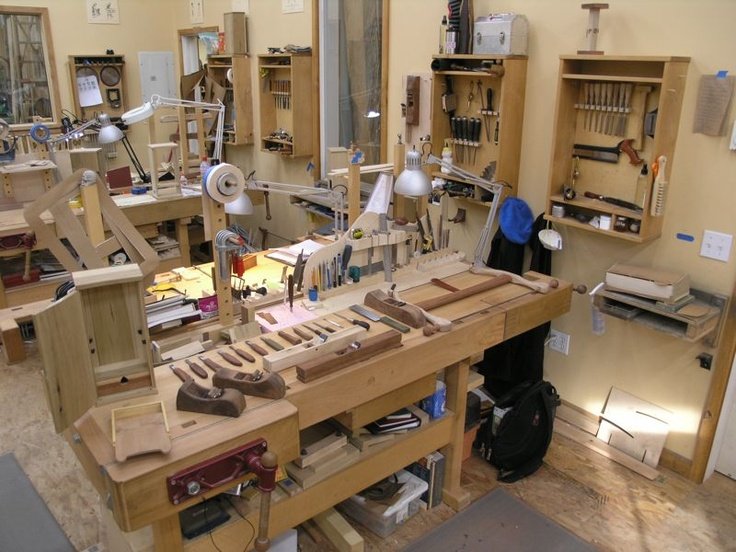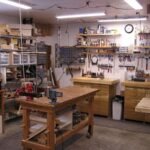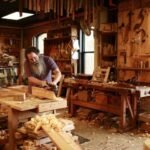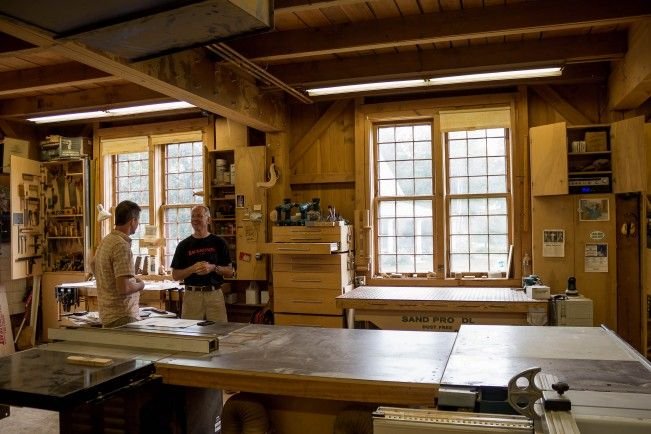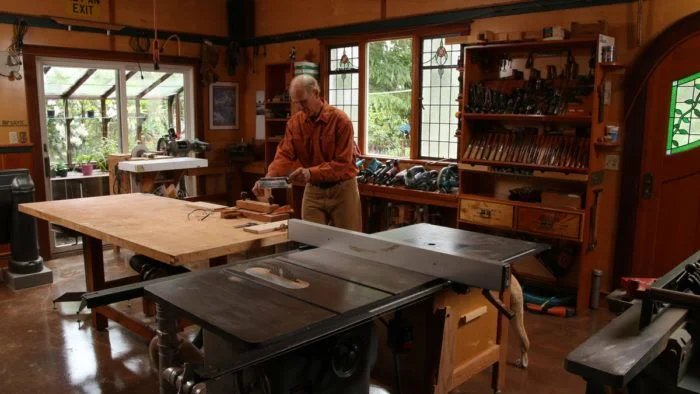The Carpentry Chronicles: Wading Through Swaine Street Woodworking
So there I was, heart palpitating just a little, standing in my garage looking at a pile of lumber that seemed to mock me. This was my first real project at home: a dining room table—a centerpiece for family gatherings, landmarks for birthday cakes, and Sunday dinners that really could use a few extra chairs. The idea was beautiful, but man, the execution? Well, that’s where things got messy.
Let’s rewind a bit to when I first thought of this grand idea. It started with me scrolling through Pinterest. Y’know how it goes—one little picture of a rustic table, and suddenly I found myself falling down a rabbit hole of woodworking brilliances, thinking, “If those people can do it, so can I!” But the difference is, they probably didn’t start out with a snaggletooth jigsaw from a yard sale like I did. Seriously, this thing was a relic. I half expected it to start complaining about “the good old days.”
What Went Wrong? Oh, Where to Start!
Fast forward a couple of excited days later, and I had amassed a dozen 2x4s of pine, a few sheets of plywood, and—what a score—a brand-new Kreg Jig from the local hardware store. I spent a good Saturday morning watching videos, even if they all made it look easier than it was. But here’s the kicker: no one warned me about measuring. It sounds so dumb, but it took me two tries to realize that math—which I thought I had left behind in high school—was going to be my biggest enemy.
Let me paint that picture: I’ve got the table legs coming together, but it feels like I’m building a toddler’s learning tower instead. Nothing lines up. I mean, seriously, I was three screws away from cranking the jigsaw back on and turning the whole thing into kindling. I remember standing there, my hands covered in sawdust, measuring tape dangling from my neck like a necklace I’d never wear. I almost threw the whole thing out and called it quits. Can you imagine? Calling it quits on a dining room table!
But somewhere between the chainsaw-like buzz of the tools and the smell of fresh-cut wood, something changed. The trick, I found, was to walk away for a bit. So after one too many “what was I thinking?” sessions, I grabbed my old coffee mug and stepped outside. The air was sharp, the kind that wakes you up. And it suddenly hit me: I didn’t need to be a woodworking wizard. I just needed patience.
That One Moment of Pure Delight
So, with renewed hope (and maybe a little coffee courage), I went back into the garage. I took it slow, made some adjustments, re-measured, and cut again. The sounds were music to my ears—the soft “thunk” of wood against wood, the sweeping whoosh of the circular saw, and the satisfying click of the Kreg jig working its magic. It wasn’t until I had the tabletop assembled, laid out wide and proud, that a wave of joy washed over me. I swear, I laughed out loud when I realized it actually worked!
Now, that wasn’t the end of the saga. Oh no, I still had to sand the thing. I’d read somewhere that achieving a smooth finish is key, but boy, doesn’t that make the blisters start buzzing on your palms? I thought I’d be a hero and go straight for the high grit sandpaper, but by the time I got halfway through, I could feel the burn creeping in. But let me tell ya, when I finally finished and ran my hand across that tabletop, I felt like I had just polished the Hope Diamond. It was heavenly.
The Sweet Science of Finish
But you know, all the sanding in the world wouldn’t mean anything without that last magical touch—a good finish. I had chosen a home-depot-brand polyurethane because, while I’d like to think I’m fancy, my wallet surely isn’t. The smell of that stuff? Woof! It was like communion with the fumes of a thousand tiny varnish factories. I relaxed my shoulders and applied the finish with what I thought was grace, only to later find out I had dripped a bit—ok, a lot—on the floor. My wife will still occasionally roll her eyes and chuckle about how I nearly had a panic attack over "silly spills."
Things I’d Wish I Knew
If you’re still with me in my rambling, here’s the takeaway, or what I wish someone had pulled me aside and said over beers one evening: Woodworking isn’t just about perfect joints and flawless finishes. It’s really about the messiness of the process itself. It’s about finding that little joy in a growing pile of wood shavings, laughing when you finally nail a complicated joint, and even feeling frustrated enough to consider abandoning ship—even if just for a moment.
So whether you’re in Swaine Street or somewhere else not far from it, if you’re thinking about diving into woodworking, don’t worry if your first project looks like a racehorse with three legs. Just go for it. Because every scrape on that table, every bump in the finish, tells a story. And, well, that’s what makes it a part of your home—a worthy spot for family dinners and the inevitable spilled grape juice that will surely follow.

